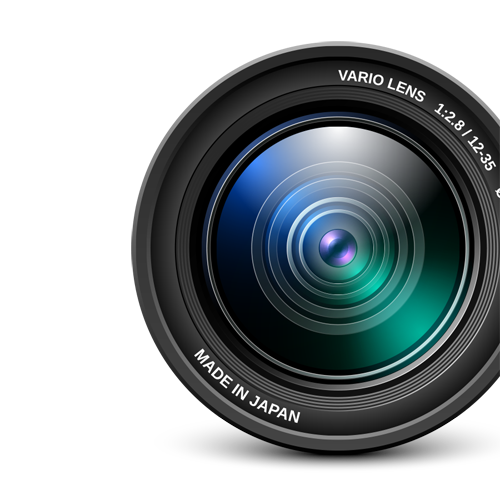With a lens, you can zoom, accentuate depth of field, increase the amount of light and so much more! Learn how to pick the right lens for you!

What is a lens used for?
When it comes to taking beautiful, precise photos, lenses are more important than the camera body. Lenses are what determine image quality. Without an appropriate lens, it will be very difficult, perhaps impossible, to take certain types of photos.
The main characteristics to keep in mind
- Focal length and angle of coverage
Expressed in millimetres (mm), focal length refers to the distance between your camera’s sensor and the centre of the lens. Simply put, it could be referred to as your lens’s vision angle. The weaker the focal length, the further away your subject will appear, but the larger the angle of coverage, meaning the number of objects an image may contain, will be. Lenses with a large focal length–between 70mm and 1200mm–are telephoto lenses that you can use to bring your subject closer, but they cover a weaker field. A standard lens will be between 40mm and 50mm, and the image will correspond to what you see with your eyes. Lenses with a weak focal length (between 8mm and 35mm) are known as wide-angle lenses.

- Aperture
The aperture of a lens is represented by the letter “f” followed by a number, for example, f/4.5. Depending on the type of lens, this may vary between f/1.8 and f/22. The larger the f number, the smaller the aperture. A large aperture allows more light into the lens, which is particularly important for taking photos in areas of low light.

- Minimum focus distance
Expressed in centimetres (cm) or metres (m), the minimum focus distance can be used to set the focus to infinity. For macrophotography or for taking a full frame photo of your subject, for example, an insect, you need a lens capable of focusing from a very close distance.
- What about weight?
If you’re going to be travelling, weight is an important factor to consider when choosing your lens. Should you opt for one that you can take anywhere, or should you take only your wide-angle lens to shoot landscapes?
- Last, but certainly not least: the price.
Different types of lenses
- Basic lenses
Often sold with the camera body, these lenses have a range of 18 to 35mm. They are perfect for beginners, but more experienced photographers won’t be satisfied for long by the image quality or focal length they offer.
- Telephoto lenses
If you like taking photos of animals or sports, telephoto lenses are ideal for taking close-ups without scaring off or bothering your subject.

- Prime lenses
These lenses have a single focal length, and therefore no zoom. If you would like to zoom to make your subject appear larger in your lens, you must approach the subject. Prime lenses seek to provide weak aperture and a low price, allowing you to play with the depth of field to create magnificent photos. The 50mm f/1.8 lens is essential for any reflex camera owner.
- Fish-eye lenses
Their rounded lens allows for a very weak focal length. They can thus be used for taking photos at very wide angles and to create distortions by packing a lot into one image. You don’t see them everyday, but they create stunning photos.

- Wide-angle lenses
These lenses are ideal for landscape, group or indoor photos. Their small focal length–less than 35mm–allows for a very large shot that captures a lot of objects or a large space within a photo.
- Macro lenses
Macro lenses are capable of focusing very closely on the details of a subject, which makes them perfect for photographing very small subjects like insects and parts of flowers.

Choosing the right lens
It all depends on the type of photos you want to take, and your budget. In addition to the characteristics of the lens, you must also take into account one final factor: stability. In fact, if your camera body is not stable enough to provide clean photos, you may want to consider opting for a lens with an image stabilizer.

